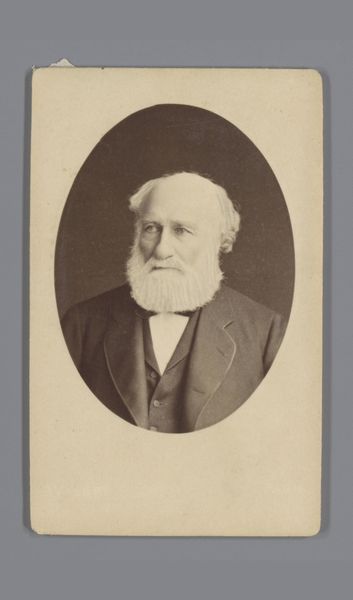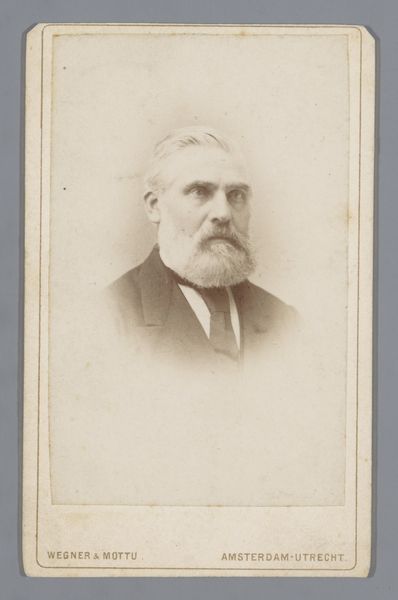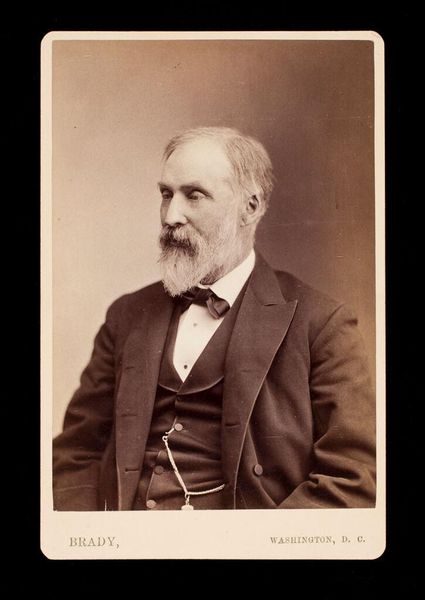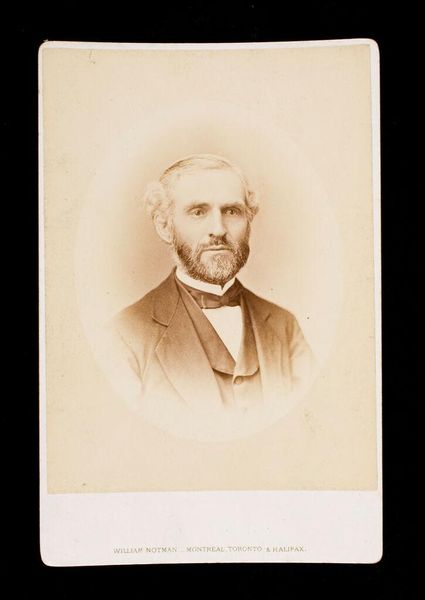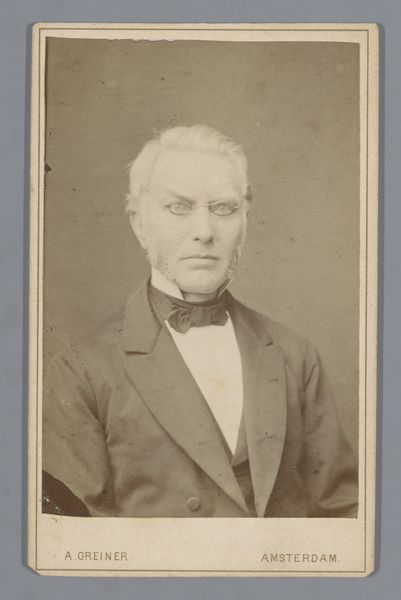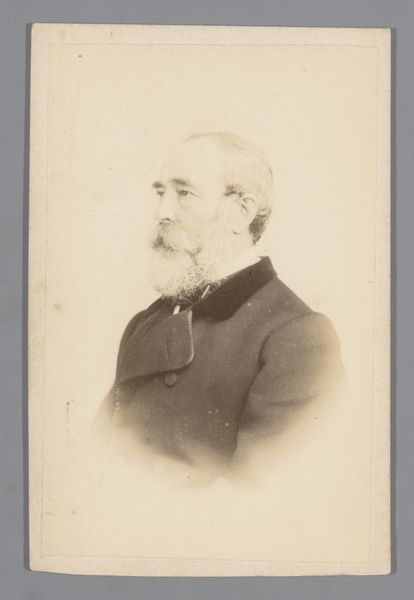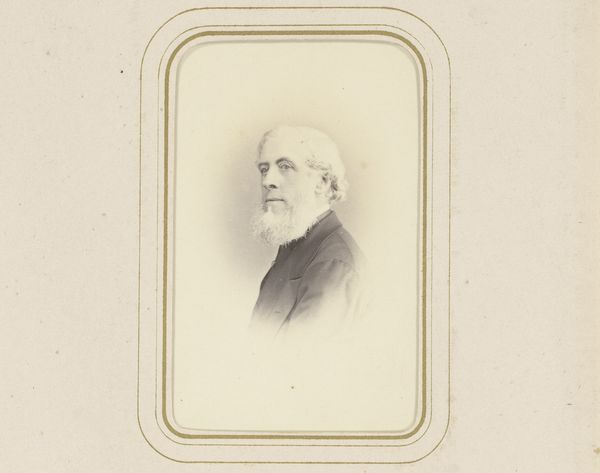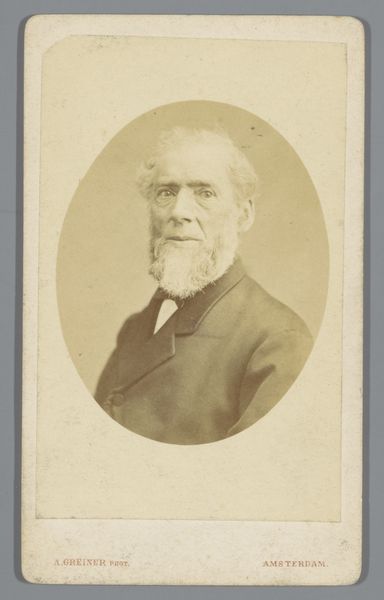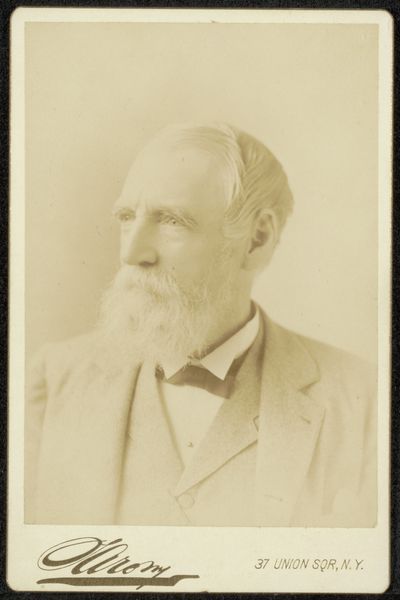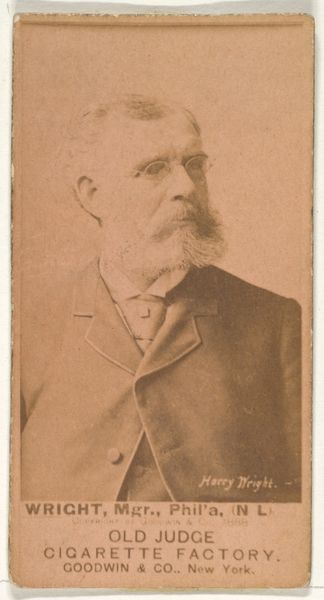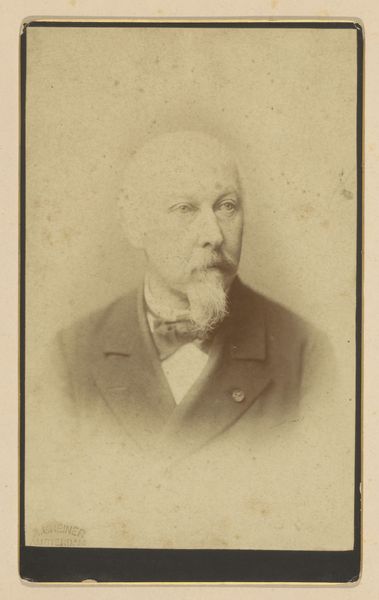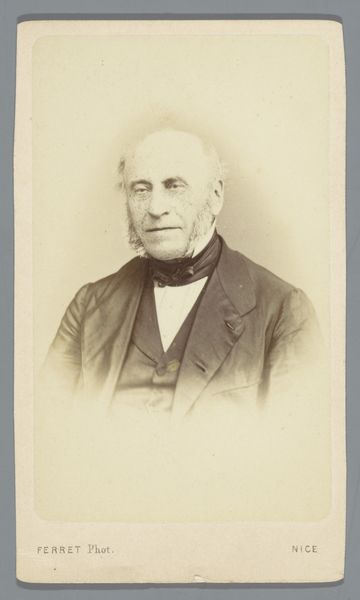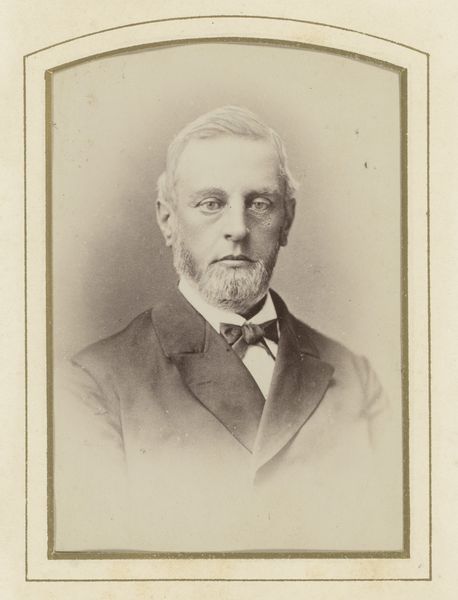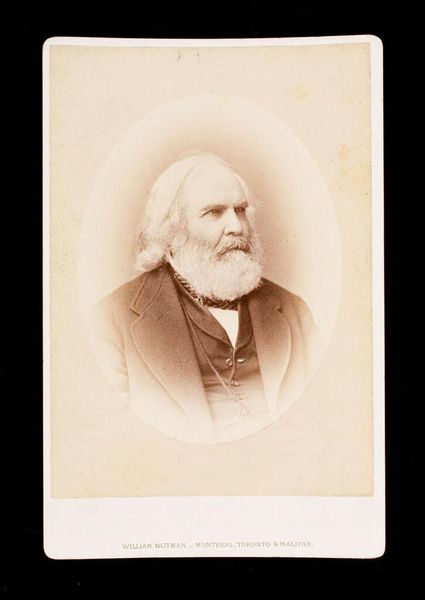
photography, gelatin-silver-print
#
portrait
#
photography
#
framed image
#
gelatin-silver-print
Dimensions: height 100 mm, width 62 mm
Copyright: Rijks Museum: Open Domain
Curator: The “Portrait of an Unknown Man,” dating from 1867 to 1880, and attributed to Eurenius & Quist, presents us with a fascinating window into the late 19th century. It’s a gelatin-silver print, typical of photography from that era. Editor: He certainly looks the part. Serious, composed...the weight of the world seems to rest on those shoulders. And the starkness of the photograph amplifies that somber quality, doesn't it? The oval frame feels constricting. Curator: The framed image format was, of course, very popular for portraiture then. It was about capturing and preserving a certain kind of bourgeois identity— respectability, perhaps even aspiration. Who was given the privilege to be remembered and recorded in this new medium, and how do they appear for posterity? Editor: I'm struck by the level of detail that the gelatin-silver process allowed. Look at the texture of his coat, the subtle variations in the beard. And what's that, a chain of some kind draped across his vest? This man likely had considerable capital and wanted to showcase that to the world. Curator: Exactly. It's about constructing a specific public persona, and controlling the narrative that circulates with the sitter's image. How is gender performed, race positioned, and class visualized in this work and in the medium of portrait photography more broadly at the time? And what's excluded? These are essential considerations. Editor: This printing method wasn’t necessarily accessible, so one imagines the labor that went into its making. Not just the photographer's work, but the making and sourcing of chemicals for processing, printing on this paper – all those unseen hands contributed to the portrait that represents more than one person, a network of production, really. Curator: Certainly a world away from today’s photographic instantaneity! Thinking about the contemporary significance, this is not just a static image but a document connected to the wider circulation of colonial ideas of visuality and identity. Editor: It's a process of extraction. Labor extracted in its production; an image extracted for consumption. And even as viewers, we extract our own meanings from it. I hadn’t thought about this piece as speaking to production networks when I walked in. Curator: That's the joy of approaching historical objects from multiple critical angles. You never know what hidden power dynamics they can reveal!
Comments
No comments
Be the first to comment and join the conversation on the ultimate creative platform.
